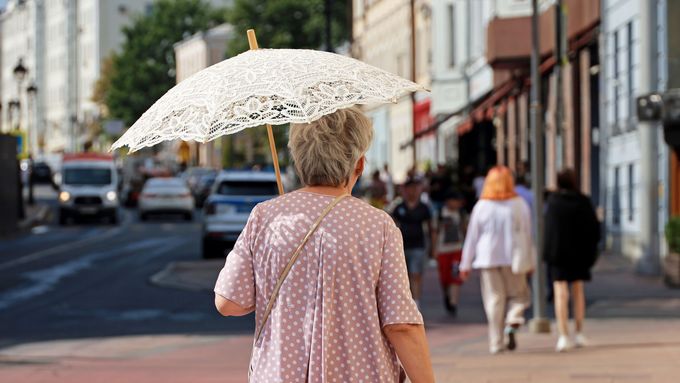Heat as a Health Risk: Need for Action to Raise Public Awareness
14.05.2024
On behalf of the federal government, Swiss TPH conducted the first nationally representative population survey in Switzerland about heat and its effects on health. The results show that the population is generally well-informed about how to protect themselves from heat. Nonetheless, many behavioural measures that help on hot days are either not known about or not actively implemented. This can lead to avoidable health consequences due to heat.

Many effective behaviours on hot days are not known or actively practiced. This can lead to avoidable heat-related health problems. (Photo: AdobeStock/Swiss TPH)
Increasing heat stress poses a risk to human health: In addition to acute symptoms such as exhaustion and heatstroke, it can also exacerbate existing conditions such as cardiovascular, respiratory and kidney diseases, as well as mental illness. On behalf of the Federal Office of Public Health (FOPH) and the Federal Office for the Environment (FOEN), Swiss TPH conducted a representative survey about individual heat literacy with 1,800 respondents aged 50 and over. Heat literacy encompasses knowledge about possible protective measures in the event of heat, how affected someone is by heat (perceived stress and health risk) and their actions in the event of heat, in particular the implementation of behavioural recommendations.
Potential to improve knowledge and implementation of heat protection measures
The survey found that over-50s generally consider themselves to have a good level of knowledge about protecting their health in the heat. However, many behavioural measures that help on hot days are either not known about or not actively implemented. This can result in avoidable health consequences due to heat. “The more different behavioural measures people know about, the better they can protect themselves and others against heat exposure,” says Martina Ragettli, Project Leader at Swiss TPH. “It's also important to inform people not only about effective protective measures, but also the health risks heat poses to them and others,” says Ragettli. The survey found that men over the age of 75, people with no post-compulsory education and those in financial difficulties know fewer behavioural recommendations and implement them less frequently than the other respondents.
Differences between regions and population groups
The survey found regional differences not only in terms of heat stress, but also perception of the health risks posed by heat. In French-speaking Switzerland and Ticino, two thirds of the population over 50 perceived the high temperatures in summer 2023 as stressful. Women over 50, people with chronic illnesses and those who considered themselves to be in a challenging financial situation felt the greatest degree of stress.
Just over half of those surveyed considered the heat to be a risk to their own health. This number was significantly lower in German-speaking Switzerland (46%) than in French-speaking Switzerland (76%) and Ticino (66%). These regional discrepancies may reflect the higher degree of heat stress in French-speaking Switzerland and Ticino. “This could also be explained by the cantonal heat action plans implemented by the authorities in these more heavily affected regions,” says Ragettli.
Sources of information and the role of healthcare professionals
In general, the heat-response recommendations communicated were well accepted by authorities and other stakeholders: Over 90% of those surveyed considered information on behavioural recommendations as informative and a helpful reminder. Key sources of information cited by the respondents included traditional media (television, radio and newspapers), weather apps, and their social environment (family, friends and acquaintances).
Healthcare professionals could play an even more important role in increasing heat literacy among the population. The survey found that healthcare professionals act as important points of contact. Extrapolated to the population over 50, it can be estimated that, in summer 2023, 300,000 people in Switzerland spoke to a healthcare professional about heat and around 6,000 people consulted a healthcare service in response to medical emergencies caused by heat.
Recommendations for increasing heat literacy
The study is the first nationwide representative survey of the over-50 cohort in Switzerland about heat and its effects on health. The findings highlight the importance of measures for the prevention of heat-related health consequences and adaptation to increasing heat stress. “To increase heat literacy among the population, especially at-risk groups, we recommend informing the public about lesser-known but effective measures in a more active way which is tailored towards individual target groups,” says Ragettli. This includes adapting one’s diet, clothing and medication dosages. Martina Ragettli also recommends the direct involvement of at-risk groups in the development of awareness campaigns and possible courses of action.
The results of the survey assist the FOPH and other actors in the implementation of measures to protect the population from hot weather. This survey is the first of four in total. In the next few years, Swiss TPH will examine the heat literacy of key actors in the healthcare system on behalf of the federal government. The project is intended to bring about a heat-resilient healthcare system in Switzerland.
Stay connected
Subscribe to our newsletter and get all the latest research news, project updates, course and event listings from Swiss TPH.
